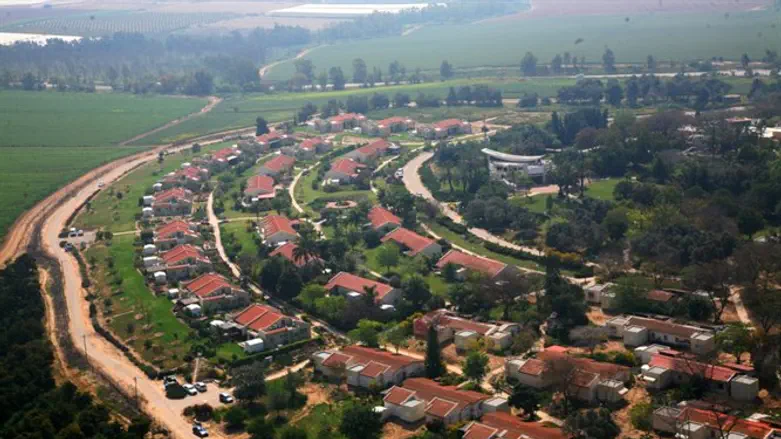
“While the news came from Gaza, on Monday I moved from one kibbutz to another to reassure the population, and then to extinguish fires”.
This is how Ilan Isaacson told me the truth about what happened in Gaza. He is the head of security at the Eshkol Regional Council, administrating the Israeli communities near the Gaza Strip, known as the "Gaza envelope."
900 meters separate Nahal Oz from the fence assaulted by the Palestinian Arabs. Beyond them there is Shejaiya, a district of Gaza. Kibbutz Nir Am woke up with a Hamas tunnel ending in its gardens during the last war. A few hundred meters separate the Israelis of Nirim from the Gaza town of Khan Younis.
“The border was open before Israel disengaged from Gaza,” Isaacson told me, explaining how things have changed since Hamas took over. He lives in Sde Nitzan, a moshav (cooperative community) not far from Gaza. “We went shopping in the Strip, my wife went to Rafah. And the Gazans came here to work. We had excellent relations. Then the Intifada, the missiles, the Hamas coup changed everything. Hamas wants to destroy us. They teach this to their children. This is why today that border recognized since 1947 is closed.”
Ilan Isaacson invited me to open a map. “There is a border between Egypt and Gaza. Why doesn't Egypt open it, since they are Arab brothers? And why does nobody ask that question? Because the relationship between Hamas and Egypt is worse than the one between Hamas and Israel. If Hamas needs something, it comes to us. Egypt is against Hamas, like most Arab countries, from Saudi Arabia to the Gulf countries. Hamas' money comes from Iran, Qatar and other countries."
"These manifestations on our border are organized by Hamas and Islamic Jihad, they are not spontaneous. I am sure that many in Gaza would like to live in peace, but there is no democracy and civil rights, they have no choice. Their wounded are paid by Hamas. The terrorists, with these demonstrations, want to revive the Palestinian question. Since 2005 there is no longer a single Israeli, civilian or soldier, in the Gaza Strip. They have their land. Do they also want ours?”.
Isaacson then explained me what threats they face. “16.000 Israeli civilians reside in the communities on the border of Gaza. And these people receive many threats from Hamas. It goes from the tunnels, the most sophisticated weapon of the terrorists, we are destroying these but there are many that they can still use, to the mortars hamas can launch easily. Of these Hamas missiles it is estimated that there are 10.000 and against these Iron Dome, our anti-missile defense system, does not work, because we are too close to the border. We have from five to fifteen seconds to find a shelter if the red alarm sounds. So in these years we have built 9.000 anti-missile bunkers for communities that are located less than seven kilometers from Gaza. Even our schools have bunkers. Now the Palestinians are burning our fields and throwing handcrafted bombs on our soldiers and our homes.”.
Isaacson is proud to be on the front line. “Three of the communities I coordinate, Beeri, Gvulot and Nirim, were built in 1946, even before the birth of the State of Israel. At the time the British were in power. And those kibbutzim are still there, today threatened by Hamas. Nirim suffered many terrorist attacks and lost many members killed by the Egyptians, then from the fedayyin, the terrorists who crossed the border before the Six Day War.”.
We also asked Isaacson what would happen in the worst case scenario: Thousands of Palestinians cross the fence, the Israeli army retreats and the border surrenders. “I hope it never happens”, Isaacson told me. “Many Palestinians would be killed. And no Israeli would want to live here anymore. For this reason we must stop them in their territory. The trauma would be so profound that nothing in this area would be the same”.
The army revealed that eight Hamas terrorists had actually crossed the border and opened fire on the soldiers, before being eliminated. “Israel had launched leaflets and told them: 'Do not approach the border'. The border is the only obstacle that separates life and death for us. But it is the same also in Lebanon and Syria, the kibbutzim there”.
Despite the scorched fields, the proclamations of the head of Hamas Sinwar on “eating the livers of the Israelis”, the tunnels and the infiltrations, no Israeli has left. “Since the last war in 2014, our population has grown 10 percent. We will not leave”.
